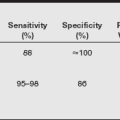
In today’s unpredictable world, being prepared for emergencies is more crucial than ever. Having a first responder kit on hand can make all the difference. This is whether it’s a medical issue, a natural disaster, or an unexpected accident.
This blog post is tailored for those who want to ensure safety both at home and in the workplace. In this guide, we’ll walk you through everything you need to know to create your own life-saving first responder kit, providing peace of mind no matter where you are.
Read on!
Assess Your Needs and Potential Emergencies
Before diving into the contents of your first responder kit, it’s important to assess your specific needs and potential emergencies. Consider factors such as your location, age, existing medical conditions, and typical activities.
For example, someone living in an area prone to earthquakes may want to prioritize items like a heavy-duty flashlight and emergency whistle.
Include Basic First Aid Supplies
The first and most obvious category for your first responder kit is basic first aid supplies. This includes bandages, sterile gauze pads, adhesive tape, antiseptic wipes, and antibiotic ointment.
These items are essential for treating minor cuts and scrapes. Whether it’s an Israeli emergency bandage or a simple band-aid, having these items on hand can prevent an injury from turning into a bigger problem.
Add Emergency Medical Equipment
In addition to basic first aid supplies, it’s important to have emergency medical equipment on hand. This could include items like a CPR mask, tourniquet, splint, and instant cold compress. These tools can help stabilize a serious injury until professional medical help arrives.
Moreover, if you or a loved one has an existing medical condition, make sure to include any necessary medication or medical devices in your first responder kit. This could be a rescue inhaler for someone with asthma or an epinephrine auto-injector for someone with severe allergies.
Include Medications and Specialty Items
If you or someone in your household has a specific medical condition, be sure to include any necessary medications or specialty items in your first responder kit. This could include things like an EpiPen for those with severe allergies or insulin for diabetics.
Moreover, if you regularly take any prescription medications, consider keeping an extra supply in your first responder kit in case of emergency. Just be sure to rotate these medications out before they expire.
Organize and Regularly Update Your Kit
Once you’ve gathered all the necessary supplies, it’s important to organize them in a way that is easily accessible and understandable. Consider using labeled pouches or compartments for different categories of items. It’s also crucial to regularly update your kit by checking expiration dates and replacing any used or expired items.
Have Multiple Kits for Different Locations
It’s a good idea to have multiple first responder kits for different locations. Keep one at home, one in your car, and one at your workplace. This ensures that you are always prepared no matter where an emergency may occur.
Learn to Create Your Customized First Responder Kit
Having a well-stocked first responder kit is essential for anyone looking to be prepared for emergencies. By following these tips, you can have peace of mind knowing you are ready to handle any situation that may arise.
Whether at home or in the workplace, taking the time to create a customized first responder kit can make all the difference in an emergency. So don’t delay – start building your life-saving kit today!
To read more, you can check out our blog page. We do have more!




